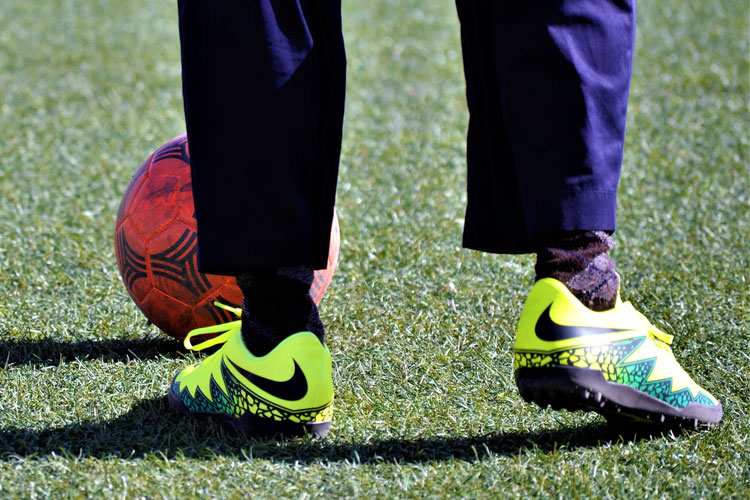
Football Endurance Training Guide 2021
Stamina and endurance are crucial yet often overlooked aspects in football. It’s not uncommon for players to struggle with fitness issues and keeping up the same intensity throughout a game.
The following article will shed some more light on endurance in football, detailing the types of endurance training that could help you increase your stamina and perform at a higher level.
The Positives of Endurance Training in Football
In short, endurance training prepares your body for strenuous, high-intensity exercise. Your overall fitness and stamina will improve via endurance training as your body learns to use oxygen more efficiently, your muscles become stronger, and your lung capacity expands.

All of this is a huge advantage when it comes to on-pitch performance. Training yourself to be able to cope well with extended periods of high-intensity exercise will allow you to keep your performance levels high throughout a match. Skill and technique are valuable assets in football but they cannot be utilised to full potential if your body is immediately tired.
Types of Endurance Training in Football
There are two primary categories that all endurance training related to football will fall into. The following section will explore each in more detail, giving tips on how to improve your endurance for football.
Continuous Training
This form of endurance training is straightforward to schedule and easy to understand. Continuous training is all about maintaining a set pace for extended durations of time.
Within continuous training, there are three different stages of training which are as follows:
-
Processing Fat
By training at around half your maximal work rate, your body will process fat well. These sort of exercises can be performed for long periods of time (around an hour) without any problems.
Fast-paced walking is an example of the sort of endurance training that falls under this category but a football can be incorporated as long as pacing remains relatively low. This isn’t about pushing yourself to the limit so try to maintain at a constant level that isn’t too strenuous.

-
Cardiovascular Improvement
Taking things up a notch to around 75% of your maximal work rate will improve your cardiovascular system’s performance. Ramping up the intensity will tire you out quicker so 30 to 45 minutes of endurance training at this level is recommended.
This sort of training engages your aerobic system and will quickly have a noticeable effect on your on-pitch performance. Any exercise where you are jogging for extended periods at a constant rate can be used as part of cardiovascular improvement training.
-
Lactic Acid Control
The final phase of continuous training is the most demanding. Here, you want to push yourself to as much as 90% of your maximal work rate to really feel the benefits. As such, this sort of training needs to be limited to around 15 minutes at a time.
This difficult phase of continuous endurance training will help your body burn glycogen and improve your tolerance for lactic acid. All of these stages of endurance training will help strengthen the muscles used, including your heart.

Interval Training
A more structured form of endurance training is known as interval training. This type of training basically boils down to periods of high-intensity exercise interspersed with rest periods.
Interval training is a great way to boost your anaerobic glycolytic system but more simply it lends itself very well to the stop-start nature of playing a game of football. This form of interval training will need a bit of planning in terms of timings and repetitions but not much beyond that.

If you want to improve your endurance, Samba Soccer Schools is the perfect place for just that. Our expert coaches teach football the Brazilian way in a fun and friendly environment. For more information, click here.
FAQs About Football Endurance Training
Is endurance training essential?
If you want to reach play top-level football or even just reach your peak performance, endurance training is a must. You will be unable to unlock your full potential if you cannot last the duration of a football match or at least keep up performances throughout.
What happens if I don’t do endurance training?
Failing to do at least some endurance training will make football matches incredibly difficult to get through. Fitter players with more stamina will be able to withstand the demands of a football match better and are less likely to pick up muscle injuries and aches.
Can I play football without endurance training?
You can play football without endurance training but it will be noticeably more difficult. If football is just a casual pastime then endurance training can be kept to a minimum but it is certainly recommended for its health benefits alone.
How do I improve my stamina?
If you’re looking to improve your stamina on the football pitch, endurance training is the number one place to start. Other things like your diet, rest and recovery, and specific drills can also help improve your stamina on the pitch.
Do footballers do endurance training?
Yes, every professional football does some form of endurance training. In very rare cases some footballers limit this due to injury but in general, it is a vital part of their training routine and cannot be overlooked.


